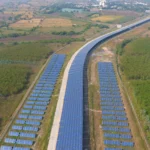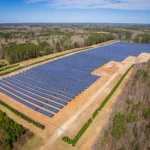Companies could earn up to 21 times the return for every dollar invested in physical climate risk mitigation, according to The 2025 Disclosure Dividend, a new data-driven report from CDP, the global independent environmental disclosure platform.
The findings come as climate-related disasters grow in frequency and severity, with the financial toll of inaction projected to hit $38 trillion annually by 2050. CDP’s analysis underscores that environmental disclosure and proactive climate action are not just corporate responsibilities—they are high-value business strategies.
The Disclosure Dividend: Turning Climate Action into Financial Returns
Drawing from the 2024 disclosures of nearly 25,000 companies, CDP found that every $1 invested in tackling physical climate risks could deliver a return of up to $21 for some firms, with an average return of $81. On average, companies reported $33.1 million worth of opportunities for every $4.6 million in costs required to realize them.
Key findings include:
-
90% of large companies disclosing to CDP already have, or plan to have within two years, a process for identifying and assessing environmental dependencies, risks, and opportunities.
-
43% of large corporates reported having a climate transition plan in place.
-
64% of companies identified environmental opportunities, with 12% unlocking a staggering $4.4 trillion in value in 2024 alone.
-
An additional $13.2 trillion in potential upside remains untapped globally.
Regional Leaders in Environmental Opportunities
Companies in Japan and Canada are leading in identifying high-value environmental opportunities:
-
Japan: $73 million median opportunity per company
-
Canada: $72 million median opportunity per company
-
USA: $15 million median opportunity per company
-
China: $10 million median opportunity per company
These variations may be influenced by different thresholds for defining “substantive” opportunities, methodological approaches, and commercial sensitivity.
From Insight to Impact
CDP emphasizes that while disclosure is critical, the real multiplier effect comes from acting on insights. Turning disclosed risks into actionable strategies can generate significant returns, both financially and strategically.
“The economics behind disclosure are becoming clear – data-driven decisions help manage business risk and unlock opportunity,” said Sherry Madera, CEO of CDP. “Companies that measure and manage their environmental impacts not only future-proof their operations but also unlock tangible financial and strategic gains. The disclosure dividend is real – and the business case for seizing it has never been stronger.”
Why Disclosure is Now an Economic Imperative
The report signals a major shift: disclosure is no longer just a transparency exercise—it is becoming an economic necessity. With the cost of climate inaction skyrocketing, businesses that act on disclosure data will be the ones to unlock the full potential of the “disclosure dividend.”












